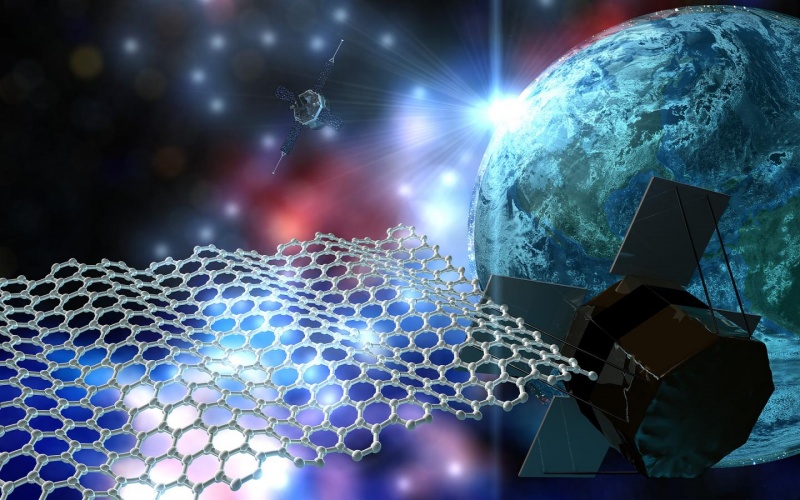The Graphene Flagship and the European Space Agency are teaming up on two new experiments to test out graphene’s potential for use in space applications.

Set to launch in November 2017, the research projects will test how the material performs under zero-gravity conditions. One will explore if graphene may be suitable for light sails to propel satellites in space, while the other will test if graphene can improve the efficiency of cooling systems used widely in the aerospace industry.
"Space is the new frontier for the Graphene Flagship,” said the University of Cambridge’s Andrea Ferrari, science and technology officer of the Graphene Flagship. “These initial experiments will test the viability of graphene-enabled devices for space applications.”
Led by PhD students from TU Delft in the Netherlands, the first project will use microgravity conditions in the ZARM Drop Tower to test graphene for light sails. The 146m tower, located in Bremen, Germany, simulates the low gravity and vacuum conditions of space, providing 9.3 seconds of weightlessness in which to conduct experiments. By shining laser light on suspended graphene membranes in the weightless environment, the students will be able to measure how much thrust could be generated using the same method in space, or using light from the sun.
The second experiment will investigate how graphene can improve efficiency in heat transfer in loop heat pipes, cooling systems which are used in satellites and other aerospace instruments. Involving multiple partners from across the EU, the project will see parabolic flights used to examine graphene-coated wicks, components that could boost the performance of heat pipes.
"The idea is to use graphene to improve the thermal conductivity and the capillary pressure by growing a sponge in the pores of the wicks," said Lucia Lombardi from the Cambridge Graphene Centre.
https://www.youtube.com/watch?v=x-nVw6RsUaA
"We want to test different kinds of coatings since the graphene and graphene oxide have different properties, but we are hoping to achieve good results with both of the coatings."
Jari Kinaret, director of the Graphene Flagship, added: "These two projects exemplify the two-fold character of the Graphene Flagship: the loop heat pipe project is targeting a specific application, while the light sail project is firmly linked to basic research and builds upon the unique combination of properties that only graphene can offer. I am particularly proud of the fact that one of these projects was initiated by students working on an area completely disconnected from space applications: this demonstrates the creativity of the next generation of researchers.”




Nanogenerator consumes CO2 to generate electricity
Whoopee, they've solved how to keep a light on but not a lot else.